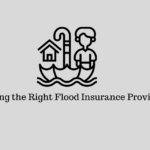Flooding is a natural disaster that can cause significant damage to homes, businesses, and communities. Conducting a flood risk assessment is essential to evaluate your vulnerability and take necessary steps to protect your property and loved ones. In this article, we will explore the process of flood risk assessment, helping you better understand your exposure to this potential threat.
The Importance of Flood Risk Assessment
Flood risk assessment is crucial for several reasons:
- Safety: It helps ensure the safety of residents and property owners by identifying potential flood hazards and allowing for informed decision-making.
- Property Protection: Assessing flood risks enables property owners to take preventive measures to protect their homes and belongings.
- Community Planning: Local authorities use flood risk assessments to develop floodplain management and emergency response plans.
- Insurance Requirements: Some areas with high flood risk may require property owners to have flood insurance, which is based on the results of these assessments.
Conducting a Flood Risk Assessment
1. Gather Information
Collect data about your location, including historical flood events, elevation, and proximity to water bodies. Local authorities and agencies often provide flood maps and historical flood records.
2. Determine Flood Zone
Identify the flood zone your property is located in. The Federal Emergency Management Agency (FEMA) in the United States, for example, designates flood zones based on the likelihood and severity of flooding.
3. Assess Elevation
Determine the elevation of your property in relation to the base flood elevation (BFE) for your area. The BFE represents the height at which flooding is anticipated during a base flood, a flood with a 1% chance of occurring each year.
4. Evaluate Structures
Assess your property’s structural vulnerability to flooding. Consider the construction materials, elevation of the lowest floor, and presence of flood-resistant features like flood vents and elevated utility systems.
5. Analyze Flood Risk Factors
Evaluate factors that contribute to your flood risk, such as local rainfall patterns, river or coastal conditions, and drainage systems.
6. Consider Climate Change
Factor in the potential impact of climate change, which may lead to more frequent or severe flooding in the future.
7. Review Local Regulations
Check if there are local building codes and regulations related to flood resilience and compliance. Compliance with these regulations may be necessary to reduce flood risk.
8. Seek Professional Help
If the assessment process appears complex or if you need precise data, consider consulting a professional engineer or flood risk consultant.
Mitigating Flood Risk
Once you’ve completed the flood risk assessment, you can take steps to mitigate your vulnerability:
- Elevate Structures: Raise your property or construct barriers to prevent floodwater from entering.
- Flood-Resistant Building Materials: Use flood-resistant building materials and techniques to minimize damage during a flood.
- Flood Insurance: Purchase flood insurance, especially if you’re in a high-risk area.
- Emergency Plan: Develop an emergency plan for your family or business in case of flooding.
- Drainage Improvements: Consider improving drainage around your property to reduce the risk of water accumulation.
- Community Engagement: Get involved in community flood preparedness and mitigation efforts.
Conclusion
Flood risk assessment is a vital process for safeguarding your property and ensuring the safety of your loved ones. By understanding your vulnerability to flooding and taking appropriate measures, you can reduce the potential impact of this natural disaster and enhance your resilience in the face of adversity.










